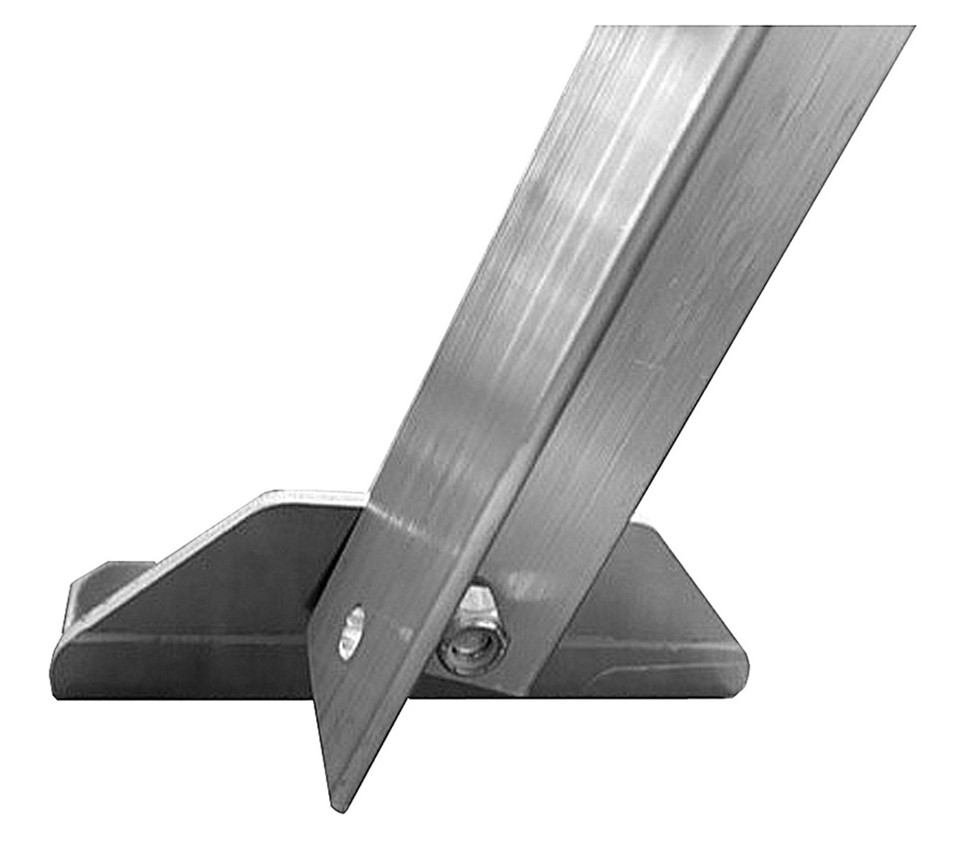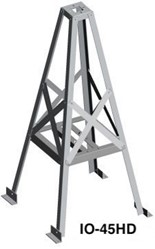New Product Spotlight: Carlson Communications Roof Towers (Video)
If you’re looking for a practical solution to overcome limited space or HOA restrictions, Carlson Communications offers four sturdy aluminum roof tower options that provide a range of choices for mounting ham radio antennas, including Hex Beams, Low Earth Orbit (LEO) satellite antennas, and others—both fixed or with a mounted rotator (Hy-Gain or Yaesu).
All towers are built to accept the Yaesu GS-065 thrust bearing, as well as mast diameters up to 2.5 inches and those extended up to seven feet. The towers’ legs, foot, and rotator shelf are constructed from 6061-T6 aluminum; X-braces are made from 5052-H32 aluminum; and hardware is stainless steel. Made in the USA, the towers are climbable with appropriate safety equipment.

Visit DXEngineering.com to view complete details of Carlson Communications Roof-Mounted Antenna Towers.
IO-45HD: 4.2 feet tall; 25-inch base width; maximum antenna wind area at tower top: 13 square feet at 80 MPH; maximum antenna, rotator, and mast weight: 200 pounds.
Per Carlson, the IO-45HD is perfect for moderate-sized HF beam antennas such as the Hy-Gain HF Explorer-14, the DX Engineering XB-5 Hexx Beam, and others.

IO-610HD: 6 feet tall; 27-inch base width; maximum antenna wind area at tower top: 12 square feet at 80 MPH; maximum antenna, rotator, and mast weight: 200 pounds.
Per Carlson, the IO-610HD is perfect for moderate-sized HF beam antennas such as the Hy-Gain HF Explorer-14, Hy-Gain TH-3MK4, the DX Engineering XB-5 Hexx Beam, and others, including Mosely, KIO, and Traffie Tech models.
IO-810HD: 8 feet tall; 32-inch base width; maximum antenna wind area at tower top: 12 square feet at 80 MPH; maximum antenna, rotator, and mast weight: 200 pounds.
Per Carlson, the IO-810HD is a good choice for small and moderate-sized HF beam antennas such as the Hy-Gain HF Explorer-14, Hy-Gain TH-3MK4, the DX Engineering XB-5 Hexx Beam, and others, including Mosely, KIO, and Traffie Tech models.
IO-815HD: 8 feet tall; 32-inch base width; maximum antenna wind area at tower top: 15 square feet at 80 MPH, 90% within one foot of tower top; maximum antenna, rotator, and mast weight: 250 pounds.
Per Carlson, the IO-815HD is perfect for small and moderate-sized HF beam antennas and an excellent choice for stacking a VHF beam along with a small HF beam.
Watch this Dayton Hamvention® 2024 video of DX Engineering’s Paul, KJ8EEP, interviewing Carlson Communications CEO, James Carlson, KE8ULJ, about his company’s roof towers.
Also check out the Carlson Communications Heavy-Duty 25G Hinged Tower Base Plate at DXEngineering.com.
The post New Product Spotlight: Carlson Communications Roof Towers (Video) appeared first on OnAllBands.




